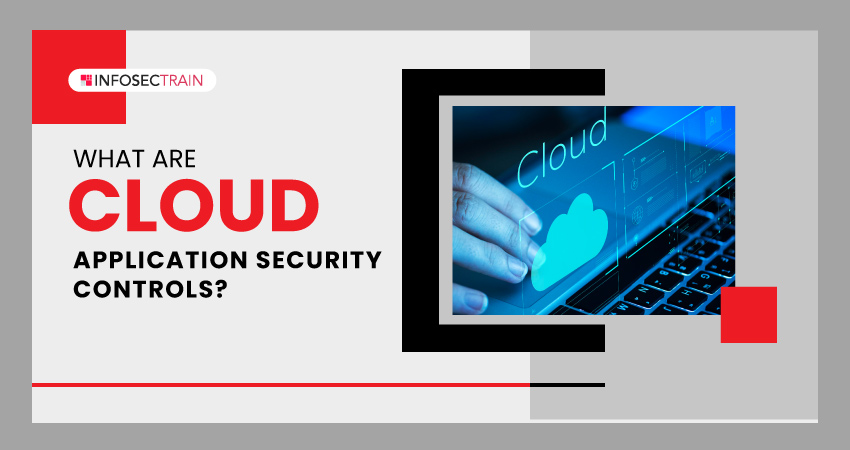What are Cloud Application Security Controls?

Table of Contents
An Overview of Cloud Application Security Controls
Key Elements of Cloud Application Security Controls
Cloud Application Security Best Practices
The Importance of Cloud Application Security Controls
An Overview of Cloud Application Security Controls
As organizations increasingly adopt cloud computing to harness the benefits of scalability, accessibility, and cost-effectiveness, the security of cloud-based applications becomes paramount. Cloud application security controls encompass a comprehensive suite of strategies, policies, and technical safeguards meticulously crafted to safeguard cloud-hosted applications and the sensitive data they handle. They are tailored solutions for the cloud environment’s security challenges and vulnerabilities. Their core objective is to fortify cloud applications by securing data confidentiality, integrity, and availability while upholding compliance with appropriate regulatory standards.
Key Elements of Cloud Application Security Controls
Here are the key elements of cloud application security controls:
- Centralized Visibility of Cloud Infrastructure : Securing a cloud environment is challenging due to the ever-changing nature of cloud services and configurations. Cloud security controls offer a solution by providing centralized visibility. This enables organizations to effectively monitor and evaluate the security status of their cloud assets, even when dealing with multiple cloud providers or services simultaneously.
- Native Integration Into Cloud Provider Security Systems: Cloud security controls seamlessly integrate with the security features and services cloud providers offer (e.g., AWS, Azure, GCP). This integration ensures that security measures are consistent and effective within the cloud environment.
- Security Automation: Automation is critical in a cloud environment because of its scalability and rapid changes. Cloud security controls should be capable of automated threat detection, response, and policy enforcement to address security incidents quickly and efficiently.
- Threat Intelligence Feeds: Cloud security controls utilize threat intelligence feeds to identify known attack patterns, vulnerabilities, and threat actors. This information helps in proactive threat detection and response.
Cloud Application Security Best Practices
Effective cloud application security controls are essential for safeguarding cloud-based applications. Below are some best practices to consider:
- Identity and Access Management (IAM): Implement strong IAM policies to ensure users have appropriate permissions to access applications and data. Multi-Factor Authentication (MFA) and Single Sign-On (SSO) enhance security.
- Data Encryption: Use encryption for data in transit and at rest. Implement various encryption mechanisms to protect sensitive information from unauthorized access.
- Monitoring Threats: Continuously monitor cloud applications in real-time to detect unusual behavior and respond to threats promptly. Leverage threat intelligence data to stay ahead of malicious actors.
- Compliance: Ensure your cloud applications comply with industry regulations and standards, such as PCI DSS and HIPAA. Regular audits can verify compliance and identify any shortcomings.
- Security Monitoring and Reporting: Implement mechanisms for monitoring and reporting security-related events in your cloud applications. This helps in early threat detection and swift response.
The Importance of Cloud Application Security Controls
Implementing robust security controls in cloud-based applications is paramount for several reasons:
- Protection from Cyber Threats: Cloud applications are prime targets for cyberattacks. Security controls act as a defense line, helping to detect and prevent attacks.
- Data Privacy and Compliance: Security controls ensure that sensitive data is protected and cloud applications adhere to regulatory compliance requirements.
- Business Continuity: Security controls play a crucial role in preserving application uptime, and minimizing the likelihood of disruptions resulting from security incidents.
- Reputation Management: Effective security controls can protect your organization’s reputation by preventing data breaches and security incidents.
- Cost Savings: Preventing security incidents through proper controls can save the organization from potential financial losses and legal consequences.
CCSP with InfosecTrain
InfosecTrain’s CCSP (Certified Cloud Security Professional) certification training course closely aligns with the core principles of cloud security controls. It equips participants with essential practices, tools, and frameworks for safeguarding cloud environments from IT security threats and vulnerabilities. The course emphasizes centralized visibility, integration with cloud provider security systems, automation of security processes, and the incorporation of threat intelligence. Additionally, it focuses on adherence to established security frameworks, enabling professionals to develop a strong security posture in the cloud. Completing the CCSP certification training course empowers individuals to contribute effectively to cloud security efforts within their organizations.
TRAINING CALENDAR of Upcoming Batches For CCSP
| Start Date | End Date | Start - End Time | Batch Type | Training Mode | Batch Status | |
|---|---|---|---|---|---|---|
| 25-May-2024 | 30-Jun-2024 | 19:00 - 23:00 IST | Weekend | Online | [ Open ] | |
| 29-Jun-2024 | 11-Aug-2024 | 09:00 - 13:00 IST | Weekend | Online | [ Open ] |




 1800-843-7890 (India)
1800-843-7890 (India) 
